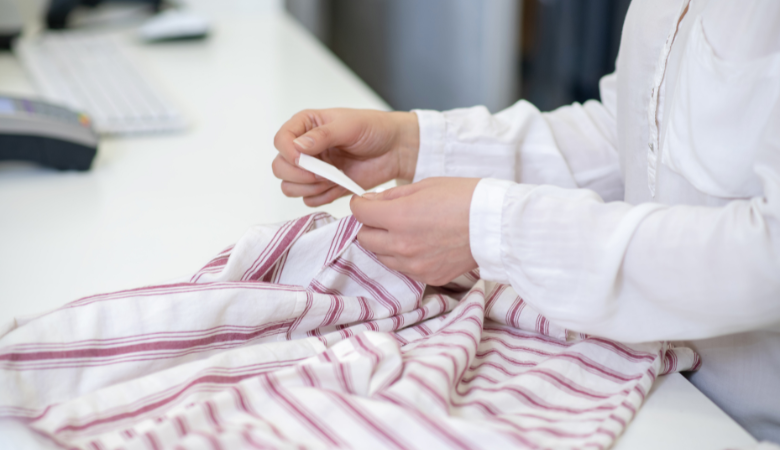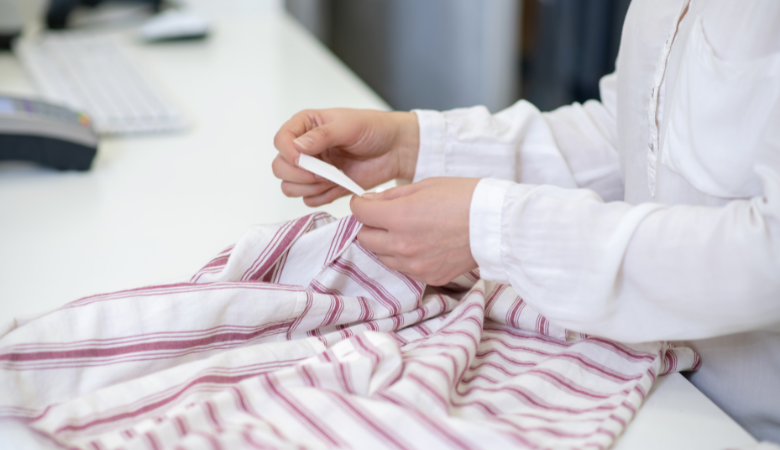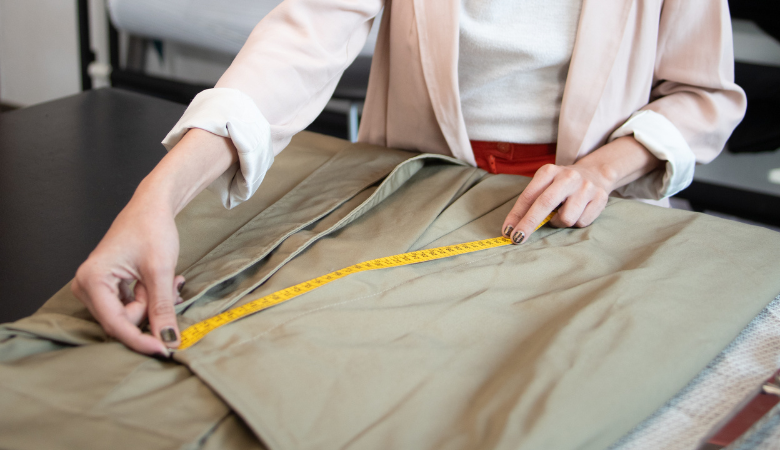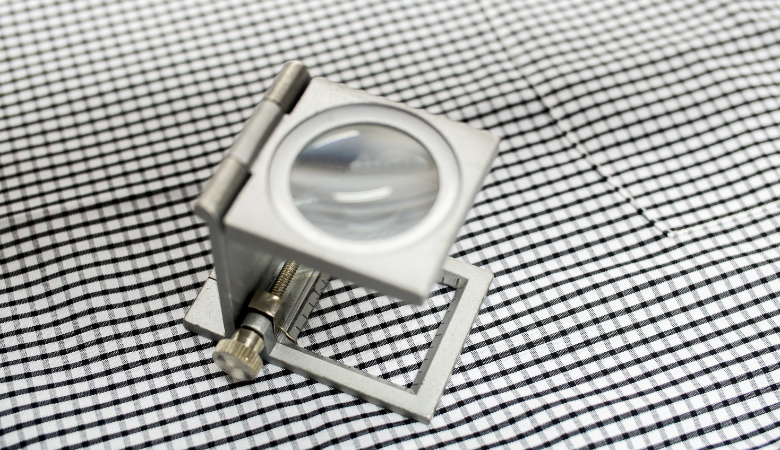
You need to understand how apparel andgarment quality controltesting protects both consumers and manufacturers. This process checks if clothing meets specific requirements for safety, durability, and appearance. Quality control focuses on finding and fixing defects in finished products, while quality assurance works to prevent problems during production. By following practical steps and established industry standards, you help ensure consistent, high-quality garments reach the market.

Key Takeaways
• Quality control checks garments to ensure safety, durability, and appearance before they reach customers.
• Testing includes physical, chemical, performance, and visual inspections to catch defects and ensure product safety.
• Following clear procedures and using checklists help maintain consistent quality throughout production.
• Training staff regularly improves their ability to spot problems and keep quality high.
• Using industry standards and regular inspections protects your business and builds customer trust.
What is Quality Control?
Definition
You encounter quality control in every step of apparel and garment manufacturing. This process involves checking products to make sure they meet specific standards. You look for defects, measure sizes, and test materials. Quality control helps you catch problems before garments reach customers.
Quality control means you inspect, test, and evaluate garments to ensure they match the required specifications for safety, durability, and appearance.
You might wonder how quality control differs from quality assurance. Quality assurance focuses on preventing mistakes during production. You set up systems and procedures to avoid errors. In contrast, quality control happens after or during production. You examine finished products or samples to find and fix defects. Both play important roles, but quality control gives you the final check before products go to market.
Objectives
You use quality control to achieve several important goals in garment manufacturing:
• Ensure every garment meets safety and performance standards.
• Detect and correct defects before products reach customers.
• Maintain consistency in size, color, and construction across all items.
• Reduce waste by catching errors early.
• Protect your reputation by delivering reliable products.
When you apply quality control, you help your company follow industry regulations and customer requirements. You also support a smooth production process.
A simple table can help you see the main objectives:
| Objective | Benefit |
|---|---|
| Detect defects | Fewer returns and complaints |
| Ensure consistency | Higher customer satisfaction |
| Meet safety standards | Compliance with regulations |
| Reduce waste | Lower production costs |
You play a key role in making sure only high-quality garments reach the market. Quality control gives you the tools to identify issues and maintain high standards throughout the manufacturing process.
Why Quality Control Matters
Compliance
You must follow strict rules when you make garments. Many countries have laws that set safety and labeling standards for clothing. If you ignore these rules, you risk fines or having your products removed from stores. Quality control helps you check that every item meets these legal requirements. You can use checklists to confirm that labels, fiber content, and care instructions are correct. This process protects you from legal trouble and builds trust with buyers.
Durability and Safety
You want your garments to last through many washes and wears. Strong seams, secure buttons, and colorfast fabrics show that you care about durability. You also need to make sure your products are safe. For example, you test for sharp edges, loose parts, or flammable materials. Quality control lets you spot weak points before they become problems. When you test your garments, you help prevent accidents and keep your customers safe.
Tip: Always test both the fabric and the accessories, such as zippers and snaps, to ensure total product safety.
Customer Satisfaction
You know that happy customers return and recommend your products. If your garments fit well, look good, and feel comfortable, you create loyal buyers. Quality control helps you deliver consistent products every time. You reduce the chance of returns and complaints. When you pay attention to details, you show customers that you value their experience. This focus on quality can set you apart in a crowded market.
Types of Tests
Physical Tests
You use physical tests to check the strength and structure of garments. These tests help you find weak spots in fabrics and seams. For example, you can perform a pull test to see if buttons or snaps stay attached. You might use a stretch test to measure how much a fabric can expand before it loses shape. Fatigue tests show how well a garment holds up after repeated use. You also check the fit by measuring sizes and comparing them to standards. Always include accessories like zippers and fasteners in your tests. If you skip these steps, you risk selling products that break or wear out too soon.
Chemical Tests
You need chemical tests to make sure your garments are safe for people to wear. These tests check for harmful substances, such as lead or formaldehyde, that can cause health problems. You also test for colorfastness. This test shows if dyes bleed or fade when washed or exposed to sweat. Chemical tests help you meet safety laws in different countries. You should also test trims and prints, not just the main fabric. Safe materials protect both your customers and your reputation.
Performance Tests
You want your garments to perform well in real life. Performance tests show how clothing reacts to washing, stretching, or rubbing. For example, you can use a flammability test to see how quickly a fabric burns. You might use abrasion tests to check if the fabric pills or wears thin. These tests help you predict how long a garment will last. You should also test packaging to make sure it protects the product during shipping and storage.
Visual Inspection
You use visual inspection to spot obvious defects. You look for stains, holes, uneven stitching, or color differences. This step helps you catch problems that machines might miss. You should inspect both the inside and outside of each garment. Accessories and packaging also need a close look. A careful visual check ensures your products look good and meet customer expectations.
Tip: Always keep a checklist for each type of test. This helps you stay organized and ensures you do not miss any important steps.
Quality Control Process
Pre-Production
You start the quality control process before production begins. This stage focuses on raw materials and components. You inspect fabrics, threads, buttons, and zippers. You check for color consistency, texture, and strength. You also review supplier documents and test reports. If you find any issues, you can reject or return the materials. This step helps you avoid problems later in production.
You can use a checklist to guide your inspection. Here is an example:
| Item | Check for Defects | Test Results | Approved |
|---|---|---|---|
| Fabric | Yes/No | Pass/Fail | Yes/No |
| Thread | Yes/No | Pass/Fail | Yes/No |
| Zipper | Yes/No | Pass/Fail | Yes/No |
| Button | Yes/No | Pass/Fail | Yes/No |
Tip: Always keep samples of approved materials for future reference.
Inline Inspection
You continue quality control during production. Inline inspection means you check garments as workers sew and assemble them. You look for mistakes like uneven stitching, wrong labels, or missing parts. You can catch problems early and fix them before they spread. This step saves time and reduces waste.
You might use random sampling to select items for inspection. You can check every tenth garment or use another method that fits your process. You also compare the work to approved samples and standards. If you find defects, you stop the line and correct the issue.
Final Inspection
You perform afinal inspectionafter production ends. This is your last chance to ensure garments meet all requirements. You check finished products for size, color, appearance, and packaging. You also test for safety and durability. You use a checklist to make sure you do not miss any steps.
During final inspection, you can use the Acceptable Quality Level (AQL) system. This method helps you decide how many items to inspect and how many defects you can allow. If the batch passes, you approve it for shipping. If not, you take corrective action.
Note: Always inspect both the inside and outside of garments. Small details can affect customer satisfaction.
Checklists and Standards
You rely on checklists and standards to guide your quality control process. Checklists help you remember every step, from raw material checks to final packaging. You can customize your checklist for each product type.
You also follow industry standards, such as those from the American Association of Textile Chemists and Colorists (AATCC) and the International Organization for Standardization (ISO). These standards set clear rules for testing and inspection. You use them to measure colorfastness, strength, flammability, and more.
Here are some common standards you might use:
| Standard | Purpose |
|---|---|
| AATCC | Textile testing methods |
| ISO | Quality management systems |
Tip: Keep your checklists and standards up to date. Review them regularly to match new regulations and customer needs.
You create a strong quality control process by following these steps. You inspect materials, monitor production, check finished goods, and use reliable standards. This approach helps you deliver safe, durable, and attractive garments to your customers.
Best Practices
Procedures
You need a clear set of procedures to keep your quality control process effective. Start by creating step-by-step instructions for each stage of production. Use checklists to track inspections and tests. These checklists help you remember important details, such as checking seam strength or verifying label accuracy. You should document every result. This record lets you spot trends and fix recurring problems.
Tip: Review your procedures regularly. Update them when you find better ways to catch defects or improve efficiency.
A sample procedure checklist might look like this:
| Step | Action Required | Completed (Yes/No) |
|---|---|---|
| Inspect raw fabric | Check for flaws | |
| Test colorfastness | Wash and observe color | |
| Measure garment | Compare to standard |
Training
You must train your inspectors and workers to recognize quality issues. Hold regular training sessions to teach them about new standards and testing methods. Use real examples to show what defects look like. Encourage questions and hands-on practice. Well-trained staff can spot problems early and know how to fix them.
Note: Training is not a one-time event. Schedule refresher courses to keep everyone up to date.
Common Challenges
You may face several challenges in quality control. Sometimes, inspectors miss defects because of fatigue or lack of experience. Inconsistent procedures can lead to confusion and mistakes. Communication gaps between teams may cause errors to go unreported.
To solve these problems:
• Rotate inspectors to prevent fatigue.
• Standardize your procedures and make them easy to follow.
• Hold regular meetings to share feedback and discuss issues.
By following these best practices, you build a strong foundation for quality control in apparel and garment manufacturing.
You play a vital role in making sure garments meet high standards. Systematic testing and careful inspections help you deliver safe, reliable products. When you follow industry standards, you protect both customers and your business. Stay alert for new ways to improve. Pay close attention to every detail. Your commitment to quality control shapes the future of apparel manufacturing.
FAQ
What is the difference between quality control and quality assurance?
You use quality control to check finished garments for defects. You use quality assurance to set up systems that prevent mistakes during production. Both help you deliver high-quality products.
How often should you test garments during production?
You should test garments at every key stage: before production, during assembly, and after finishing. Regular checks help you catch problems early and keep quality high.
Why do you need to test accessories and packaging?
You test accessories and packaging to make sure they meet safety and durability standards. Zippers, buttons, and packaging can affect the final product’s quality and customer satisfaction.
What standards guide apparel quality control?
You follow standards like AATCC for textile testing and ISO for quality management. These standards give you clear rules for testing, inspection, and documentation.
Tip: Always keep your standards updated to match new regulations and customer needs.



